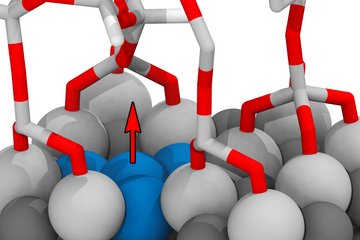All genres
621.
Talk
Ab initio thermodynamics: A novel route to design materials on the computer. Colloquium at Universität Marburg, Marburg, Germany (2015)
622.
Talk
Understanding the fundamental mechanisms behind H embrittlement: An ab initio guided multiscale approach. International Workshop MoD-PMI , Marseille, France (2015)
623.
Talk
Chemo-mechanical coupling: Ab initio concepts for Fe-based alloys. SPP1713 spring school, Maria Laach, Germany (2015)
624.
Talk
Coupling of magnetic and lattice degrees of freedom in metals. Magnetism Minisymposium, Uppsala, Sweden (2015)
625.
Talk
Materials design based on predictive ab initio thermodynamics. Colloquium at Lawrence Livermore National Lab, Livermore, CA, USA (2015)
626.
Talk
Ordering phenomena in InGaN. Lecture at University of California, Santa Barbara, Santa Barbara, CA, USA (2015)
627.
Talk
Overcoming Growth Limitations by ab initio Guided Surface Engineering. ICMCTF Conference, San Diego, CA, USA (2015)
628.
Talk
Electrochemistry from a semiconductor physics perspective: New tools and insights. SurMat Workshop , Düsseldorf, Germany (2015)
629.
Talk
Point Defects at Finite Temperatures. Conference and Workshop “Nothing is perfect, Monte Verita, Switzerland (2015)
630.
Talk
Materials Simulation: Mechanisms and Processes. BMBF Wing Conference, Dresden, Germany (2015)
631.
Talk
The Itinerant Coherent Potential Approximation for phonons: role of fluctuations for systems with magnetic and chemical disorder. Materials Theory Group, Oak Ridge National Laboratory, Oak Ridge, TN, USA (2015)
632.
Talk
Adaptive C content in coherently strained kappa-carbides - An ab-initio explanation of atom probe tomography data. TMS 2015, Orlando, FL, USA (2015)
633.
Talk
Random phase approximation up to the melting point: Impact of anharmonicity and nonlocal many-body effects on the thermodynamics of Au. DPG Spring Meeting 2015, Berlin, Germany (2015)
634.
Talk
Thermodynamic phase stability in the Al–Sc system using first principles methods. 79th Annual Meeting of the DPG, DPG-Frühjahrstagung 2015, Technische Universität Berlin, Berlin, Germany (2015)
635.
Talk
Ab initio description of the Ti bcc to omega transition at finite temperatures. DPG-Frühjahrstagung 2015, Berlin, Germany (2015)
636.
Talk
Magnon-Phonon-Coupling in Fe. ICAMS Retreat 2015 , Soest, Germany (2015)
637.
Talk
Multi scale Simulation of complex materials under realistic environments. RESOLV Workshop , Velen, Germany (2015)
638.
Talk
Multiscale modelling of hydrogen embrittlement in metals. DPG Spring Meeting, Berlin, Germany (2015)
639.
Talk
Formation energy of ions in water: An ab-initio molecular dynamics study. DPG 2015, Berlin, Germany (2015)
640.
Talk
Thermodynamics of the Q phase in Al–Mg–Cu–Si. ICAMS Scientific Retreat, Soest, Germany (2015)











